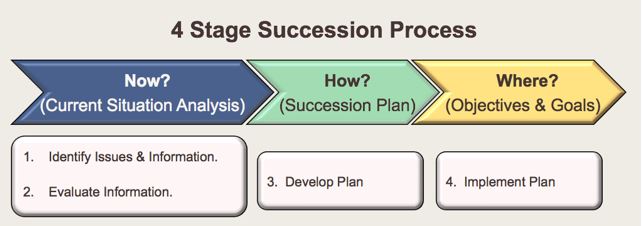Business Succession involves the transfer of Ownership, Leadership, Management and (sometimes) Employment, from one generation to another.
The succeeding generation can be within the family, or not. The objective is to transition the business from one generation to the next, so it can survive and be renewed. Family Succession is another thing entirely, although the two can be heavily enmeshed.
Succession requires current “in control” individuals to progressively let go of control, AND for their nominated successors to step up into the spaces being vacated. If any part of this synchronised dance isn’t working, the whole process can stall, or fail altogether.
Successful succession requires getting a lot of things in place, in line, and activated, including:
- Plans – clarity of purpose; certainty of intent, and commitment to act.
- Organisational Lifecycles – appropriate timing for the business and the family.
- Human Lifecycle – synchronisation of personal head space (left brain) with emotional readiness (right brain).
- Appropriate human resources available to replace existing personnel.
- Adequate supporting systems (business, family and personal).
- Workable financial plans for the family and the business.
- Adequate financial security for outgoing individuals.
Many succession processes struggle, because they aren’t well planned, or well implemented.
Some fail because the elements required for success (usually time, people or financial resources) are not properly recognised, are not obtained, or don’t exist.
Others fail because the family’s or the leader’s Motivation (desire to act) is not matched by their Activation (physical actions). They talk the talk, but don’t walk the line.
We’re seeing increasing Fossilisation, where a family and/or business leader can’t, or won’t, allow change. Since all viable families and businesses are dynamic, everything crashes against, or tries to fly away from, the immovable object at its core. A meltdown is inevitable.
We’re seeing lots of MiAMs (Missing in Action Mothers) failing to step up to save their families when their long term partners have fossilised, or are fossilising. MiAMs are so used to following and supporting their men they’ll do this into the grave, even if that means watching from the sidelines as their families disintegrate and their life’s work and wealth evaporate.
It feels profoundly unnatural, and challenging, watching mothers doing nothing useful as their families implode. It must happen in reverse, but we haven’t yet seen that.
Low emotional resilience in some or all family members is a key indicator for this.
There’s an old saying that: “succession should be a process, not an event”. Although there are many moving parts, when you break them down to address each element with enough time and energy, it’s not that hard to work your way to a successful succession that makes the family happier and the business stronger.
Our 4 Stage Succession Process looks like this:



